Question: I have often wondered what form of our bodies we will have in the resurrection. Will we come back as our best possible selves? Will I have my tattoos?

Justin Bieber’s first tattoo – a cross and the word “forgiven” where Jesus’ spear wound would have been. See all the additions to Justin’s tattoos in the photos at the end of this article.
Frank Answers: God created us as bodies. Like the rest of God’s creation, he pronounced it “good.” Throughout our lives God continues to connect with us through our bodies, especially in the sacraments of the church that use earthly signs applied to and ingested in the body (Holy Baptism and Holy Communion). Easter has been the premier day in the church year for Baptism and all baptized Christians have been encouraged to receive Communion on Easter Day. So thinking about the body—Christ’s risen body and our sacramentally-impacted bodies—is unavoidable on Easter Day.
As for the resurrection of our own bodies, what God created good in the first place he will restore in the last place. God doesn’t want to lose his good creatures. That’s what the resurrection of the body is all about. It is an article of faith for us Christians. We say in our Creed, “I believe in the resurrection of the body and the life everlasting.” We will not enter eternity without a body.
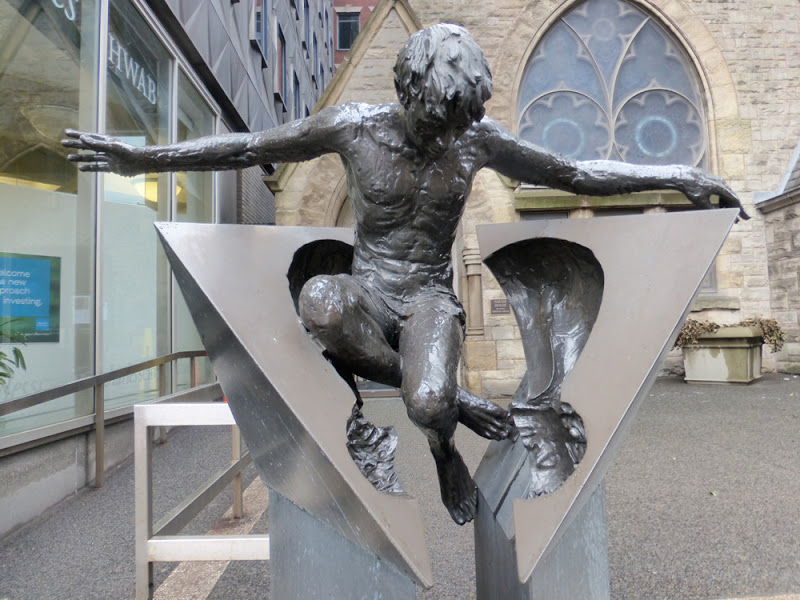
Paul T. Granlund’s “Resurrection” is a bronze sculpture outside First Lutheran Church in Pittsburgh. The artist says it portrays John 5:28b-29a: “For the hour is coming, when all that are in the tomb will hear His voice and come forth, those who have done good, to the resurrection of life.”
But what will a resurrected body be like? The paradigm for our resurrection bodies is the risen body of Jesus since his is the only resurrected body we know. (Resuscitation is not the same as resurrection. Nor are near death experiences the same as resurrection.) Jesus’s risen body was “glorified.” He was able to appear in the upper room with the disciples, coming through locked doors. But he was not a ghost; he ate and drank with his disciples on several occasions after his resurrection. In fact, he said: “I am not a ghost! I have flesh and bones,as you can see” (Luke 24:39-43). In fact, it seems Jesus made a point of showing his disciples his body with the marks of his crucifixion. We read in John 20 (the Gospel for the Second Sunday of Easter):
19When it was evening on that day, the first day of the week, and the doors of the house where the disciples had met were locked for fear of the Jews, Jesus came and stood among them and said, “Peace be with you.” 20After he said this, he showed them his hands and his side. Then the disciples rejoiced when they saw the Lord.
But Thomas was not among them that night.
24But Thomas (who was called the Twin), one of the twelve, was not with them when Jesus came.25So the other disciples told him, “We have seen the Lord.” But he said to them, “Unless I see the mark of the nails in his hands, and put my finger in the mark of the nails and my hand in his side, I will not believe.”
Thomas has been called “doubting” because of this response. But there are other ways to look at his response. The disciples had not proven to be reliable. Why should he trust their report? Moreover, if it was Jesus they had seen, there ought to be on his body some identifying scars from his recent crucifixion. Jesus himself gives Thomas the evidence he seeks eight days later (the next Lord’s Day) when the disciples were again gathered in the house (as the church).
26A week later his disciples were again in the house, and Thomas was with them. Although the doors were shut, Jesus came and stood among them and said, “Peace be with you.” 27Then he said to Thomas, “Put your finger here and see my hands. Reach out your hand and put it in my side. Do not doubt but believe.”
Jesus still had the marks of the nails and the spear from his crucifixion when he appeared to Thomas and the others. He even invited so-called “doubting” Thomas to put his fingers in the open wounds, although, contrary to the painting by Caravaggio entitled “The Incredulity of Thomas” (see the picture above this article), the text does not say that Thomas accepted the invitation to touch Jesus’ wounds. But give Thomas credit that an apparition would not do for him. Thomas was no gnostic for whom material reality was unimportant and only spiritual reality was important. For him a resurrected body had to be a real body, and if the body is one that had been crucified its piercing wounds should still be evident.

28Thomas answered him, “My Lord and my God!” 29Jesus said to him, “Have you believed because you have seen me? Blessed are those who have not seen and yet have come to believe.”
Far from being just a doubter (although doubt is often a way to faith), Thomas makes the highest christological statement in the Gospels. He confesses Jesus to be “Lord and God.” For Christians, if we want to know God we look to Christ, and to his body.
Not everyone can have Thomas’ personal encounter with the risen Christ. So Jesus blesses those who will not see him in the flesh but yet will believe in him. The same body of Christ that Thomas saw ascends into heaven and his wounds go with him. If the wounds made by the nails and the spear in Jesus’ side were evident after his resurrection, was this his best possible self? Was he raised from the dead with his wounds intact? But if his body had been raised in the same condition it was in when he was buried, where were his bruises and stripes from his beatings and flogging? Those are not mentioned in the gospels. But apparently the wounds from the crucifixion were necessary for Jesus’s post-resurrection identity because the disciples didn’t always immediately recognize him. They had to see him as the crucified Christ.
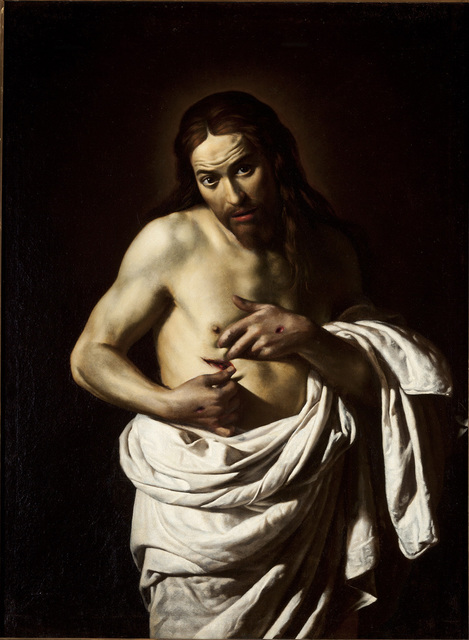
“Christ Displaying his Wounds” by Gionvanni Antonio Galli (called Lo Spandarino)
Because the Christ is also the Son of God and the second person of the Trinity, his body has also been taken into the Godhead. His wounds remain a permanent mark of his risen, ascended, glorified body. God still connects with us bodily and in Christ God identifies with our hurting, suffering, sometimes traumatized bodies that never seem perfect no matter how hard we try to improve them through diet and exercise.
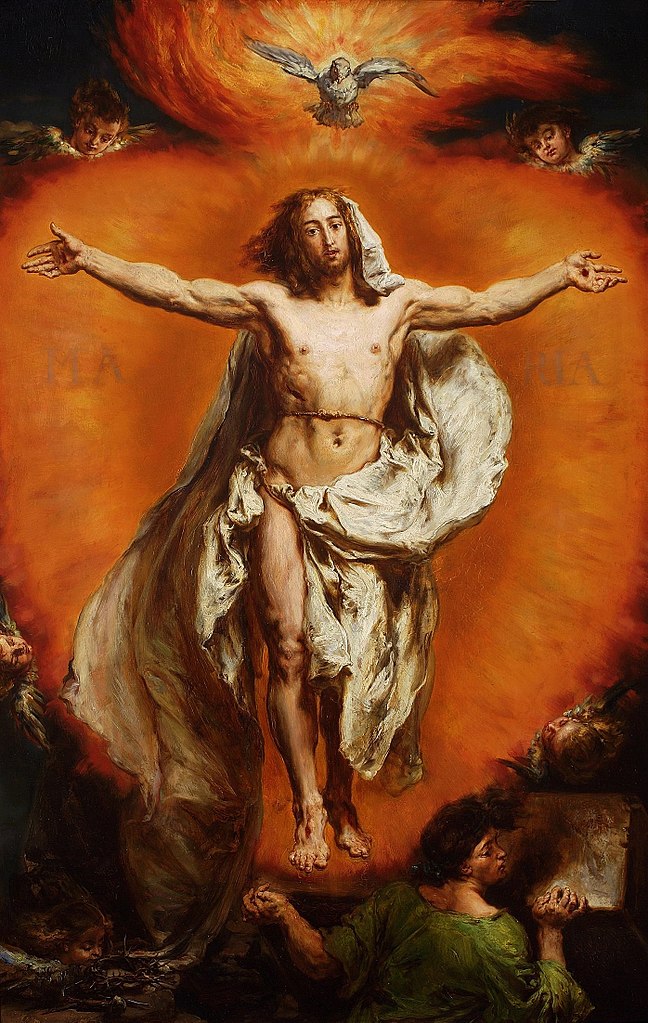
Ascension of Christ by Jan Matejko (1838-1893). The wounds are still visible.
We need to ask: what is important about our identity to others that will establish our continuity between these mortal bodies and our resurrection bodies? For Mary Magdalene what was important was Jesus’ tone of voice. For the disciples at Emmaus it was the way Jesus broke the bread. For Thomas it was Jesus’ wounds. Would tattoos be marks of identity for those who have them? I can’t disqualify that since Jesus’ physical marks established his continuity for his disciples. People’s tattoos are an indelible part of them, including for tattooed Christians (even tattooed Lutherans).

The question asks, “will we come back as our best possible selves?” What would that be? Is our best self when we were young or middle aged or old? Will a human being who died as a baby be a baby in the resurrection or will that person be raised in his or her full adult potential? What would be our best possible self?
Well, at my age if I’m thinking only in terms of physique, I’m past my best possible self. I might even think that I never had a best possible self if my standard of comparison is the hunk in the above photo. But my body keeps changing as cells die and are replaced. So will one of the bodies I have had in this life be my resurrection body? Or will it be a body that is changed from any previous body I had because new cells will come together as my body is reconstituted in God’s new creation?
As long as we are thinking in those terms, what about the babies who were stillborn or aborted? And since we like to think about seeing our loved ones again in the afterlife, is there something about the unborn that will cause their would-be parents in this world to recognize them in the world to come?
I’m obviously engaging in speculation here. But I’m trying to keep it based on what we know from the Biblical records and promises. The Bible envisions the whole creation being made new—even a new heaven as well as a new earth. If Isaiah envisions the lion and the lamb lying down peaceably together in God’s kingdom, why should not the abortioner and the aborted, the executioner and the executed, the murderer and the victim, be at peace with each other? You can let your imagination go on from there. The hostilities and alienation of this world cannot be carried into the life of the world to come and expect that the new creation will be a peaceable kingdom. Either some people have to be excluded from it or reconciliation must be a final reality.
I will not venture beyond this point because it would get us into the hoary realms of hell, purgatory, and universal salvation. But we aren’t really moving beyond the question of personal identity in the resurrection. In fact, we can’t deal with the individual in isolation from the universal—not in God’s kingdom.
But there are some additional things I will comment on. First, tattoos are personal expressions. An individual self is a good thing. That’s why resurrection of the body is promised. But the individual self cannot function in the afterlife any more than in this life in isolation from others. So I dare say that what our risen bodies will bear will depend on what others need to see in us, just as Jesus’ failed disciples needed to see him as their crucified Savior who still bore in his risen body the marks of his crucifixion. By this logic, consider that your tattoos, if you have any, may be a part of your risen body—not because you like them but because others need to see them to continue their relationship with you.

Another thing to consider about tattoos. They are body art. Body art, like other creative expressions, endures. Those who get inked have something in mind when they consult with the tattoo artist—some message they want to convey. I wonder what the message is of the rose and skull tattoo on the body of the woman in the image below. Is it saying something like we encounter death in the midst of life? This is most certainly true, and will be true until the resurrection of the dead.

One final thought about tattoos: in Baptism we are “marked with the cross of Christ forever.” We trace the sign of the cross on the newly baptized using oil. In the ancient Mediterranean world tattoos were called stigmata. They showed the downgraded status of the person—slaves and criminals were branded. Christians adopted the stigmata as a way of showing that they were slaves of Christ. Persecuted Coptic Christians in Egypt tattooed crosses on their inner arms as a sign of faithfulness. Ethiopian Christians even today have a little cross tattooed on their forehead to display their faith. Tattoos can be considered an embodied form of devotion to Christ and a witness to his saving cross. So the baptized may be marked with the cross of Christ forever, but for some of the baptized it is more indelible.

Pastor Frank Senn, STS


Justin Bieber’s accumulated tattoos by 2019. His body is a living book of his views over the years.

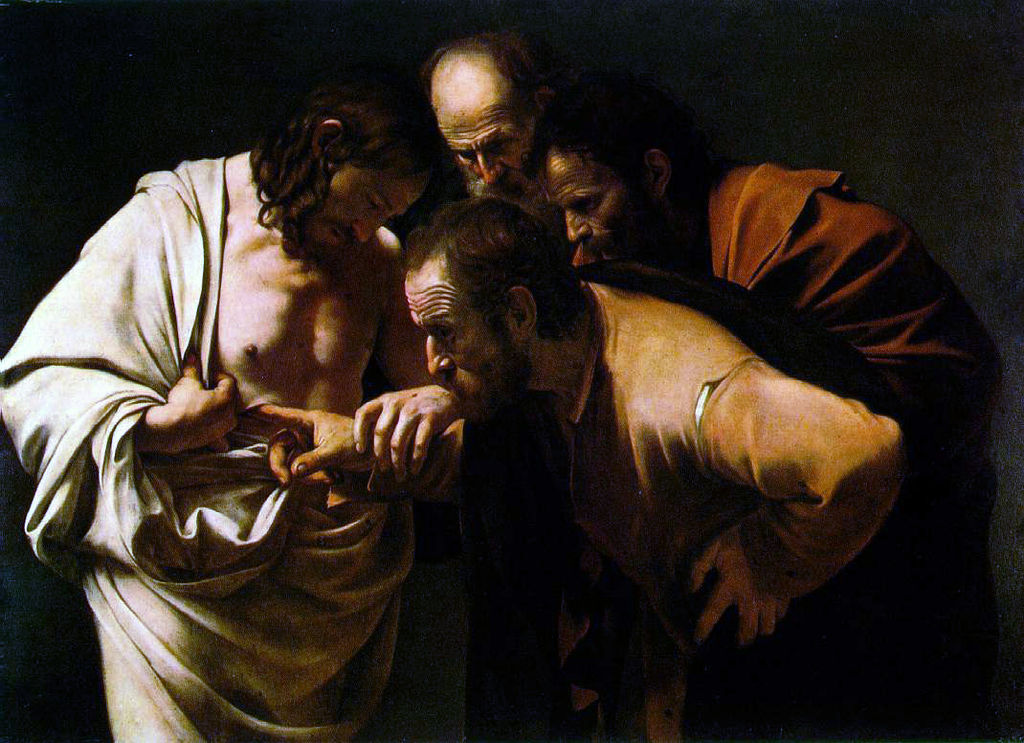
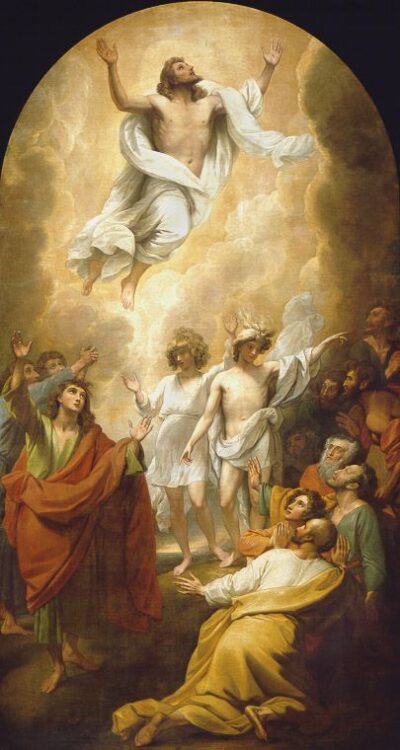

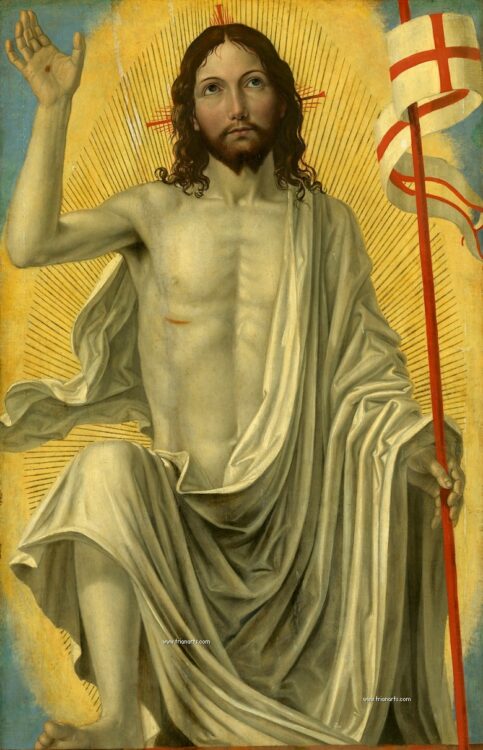

I think that tattoos are filthy! To use our wonderful body as a billboard is an atrocity! When I was in prison I saw LOTS of tattoos, even men who had their eyeballs tattooed!!!! What would drive a person to have something like that? Unfortunately, tattoos are becoming VERY common nowadays, and it really saddens me. Even if someone decides to try to cover up a scar or other skin blemish, I think that I would have still considered their body beautiful BEFORE they did so.